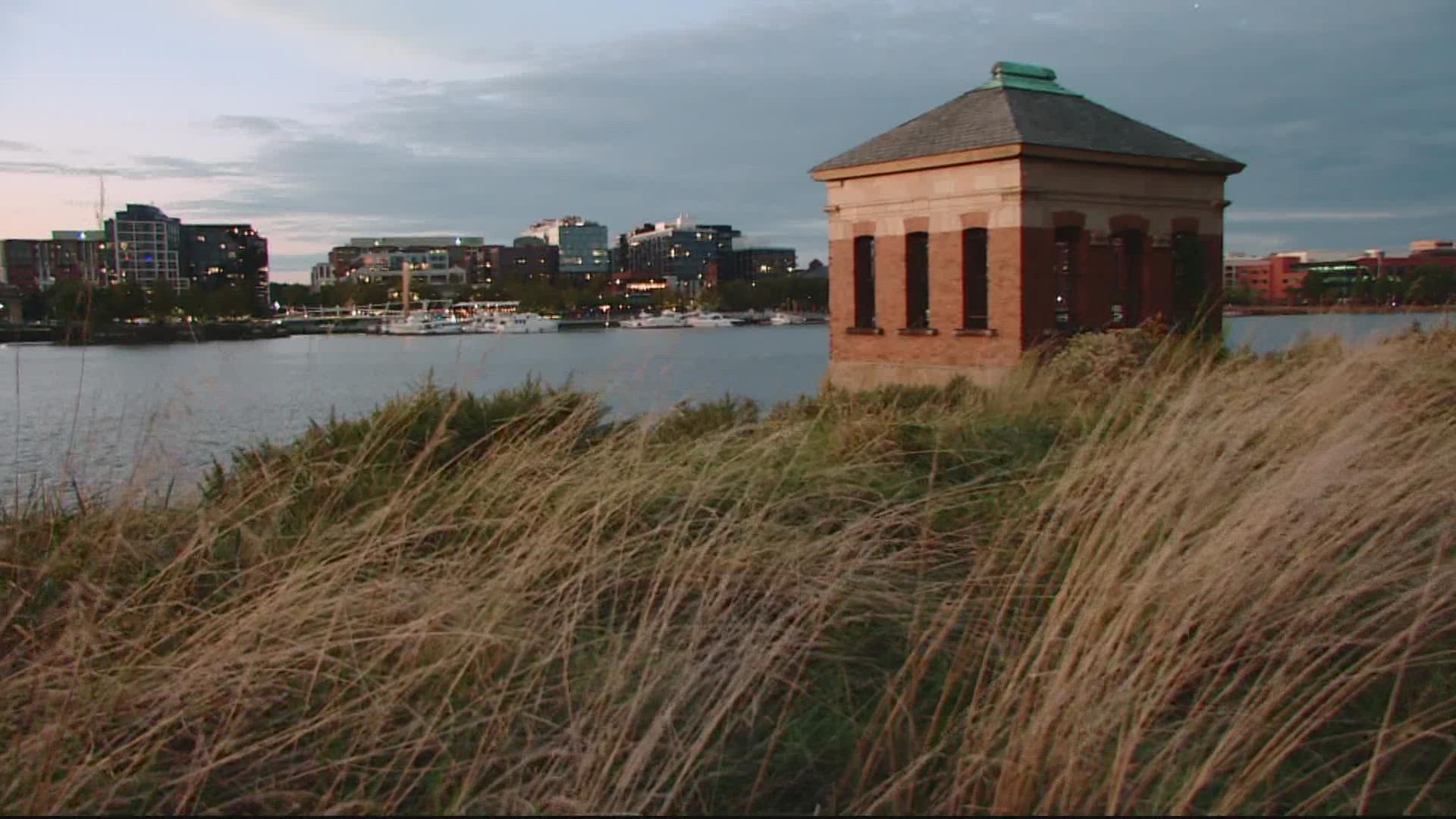WASHINGTON — As Hurricane Ian approached Florida, some communities on the Gulf of Mexico prepared to deal with storm surges higher than 10 feet of water. According to the National Hurricane Center, if such surges occurred in the D.C. region, the impact would be devastating.
Typically, tidal flooding plagues low-lying areas near the Potomac and Anacostia rivers. However, if strong winds from a strong hurricane were to push water up the Chesapeake Bay, many recognizable landmarks in the region would be submerged.
A National Hurricane Center storm surge map shows that if a Category 4 hurricane along the east coast pushed three feet of surge water up the Chesapeake Bay and the tidal Potomac, operations at Reagan National Airport would be impacted.
More than nine feet of storm surge could inundate Navy Yard, Hains Point, and even parts of the National Mall along Constitution Avenue.
Thirteen feet of water could even, once again, cover the Georgetown Waterfront.
Massive flooding resulting from a tropical storm surge and a high tide is not unprecedented in the D.C. and Baltimore region.
In 2003, Hurricane Isabel pushed an eight foot storm surge up the Chesapeake Bay, devastating Annapolis.
Dr. Don Boesch, President Emeritus of the University of Maryland Center for Environmental Science said considering the impact of climate change over the last two decades, if a scenario like Isabel happened in the D.C. region now, the effects would be even worse.
“With the fact that we've had sea level rise and the bay has therefore become deeper, it can allow the storm surge to propagate more,” he said. “You could estimate that if we would have the same conditions prevail, we would have maybe one- or two-feet higher storm surge than we did then.”
Boesch added that climate change can also impact tropical activity around the D.C. region in another way as well.
“The other thing to keep in mind is that as the ocean warms off our coast, that allows intense hurricanes to keep being fueled farther north,” he said. “So, if you seen [with] Fiona, [that] went all the way to Nova Scotia because of the warm ocean waters. So warmer waters will allow hurricanes to go more northward into our area.”
Erin Capps serves as an emergency management project director with Atkins North America, a global design and engineering firm.
She said more people in power are heeding the call to do something about frequent flooding across the United States.
“We have a lot of people across our local, state, and federal levels that are focusing on [flooding], focusing on mitigation, trying to not only build back better, but to make us more resilient in the first place so that we can lessen the impact of these disasters.”
Capps mentioned the work of D.C. and Montgomery County as some of the local communities in the D.C. region working to become more resilient.
She said officials are asking questions like where flood risks are greater or how to construct buildings in a safer manner more than in the past.
Capps added there are also flood insurance options and additional programs aimed at helping home and business owners from organizations like FEMA, the National Flood Insurance Program as well.
“I think there's been a lot, over the last 10 years, of awareness around this issue,” she said. “Because we're seeing floods that are in areas that maybe weren't designated as high-risk.”
More American communities are also changing design strategies and building codes to address flooding too.
“I think some of the impediments to that is obviously cost, making that a focus, and not just the cost of taking on those activities but cost of enforcement,” Capps said. “That's something we see often with local officials, what they come up against is.”
However, Boesch said the average American can also cut down on the emerging consequences related to tropical disasters by working to reduce emission and slowing the warming of the Earth.
“I think people are getting the message that these extreme weather events, whether it be hurricanes, these really intense rainfall events, forest fires in the West, are linked to the changing climate,” he said. “I think most people don't necessarily understand what they can do about it.”

